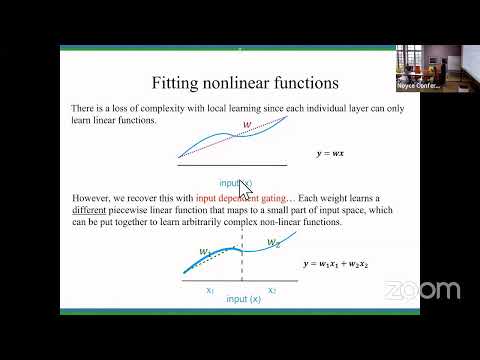Description:
Explore a lecture on alternative machine learning approaches that mimic human learning processes, focusing on local learning and dendrigated networks as alternatives to backpropagation. Delve into the biological basis of learning in animals, artificial neural networks, and the concept of gating inputs. Examine the cerebellum's role in learning, particularly Purkinje cells, and review computational experiments demonstrating the effectiveness of these approaches. Investigate applications in tasks such as the vestibulo-ocular reflex, predicting chaotic signals, and learning nutrition boundaries. Gain insights into the advantages of these biologically-inspired methods, including their ability to remember old tasks and train on multiple tasks simultaneously.

Training Machines to Learn the Way Humans Do - An Alternative to Backpropagation
Add to list